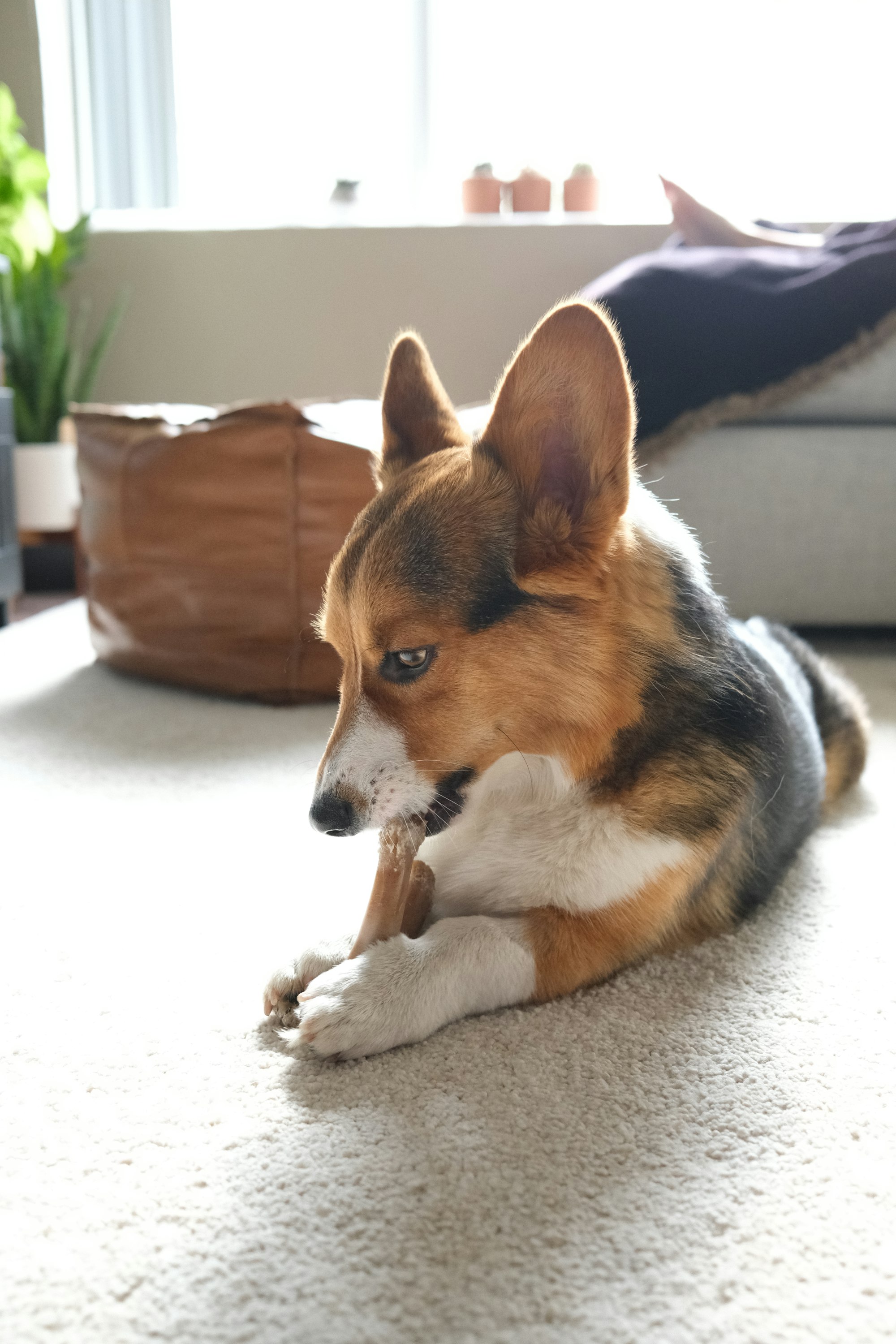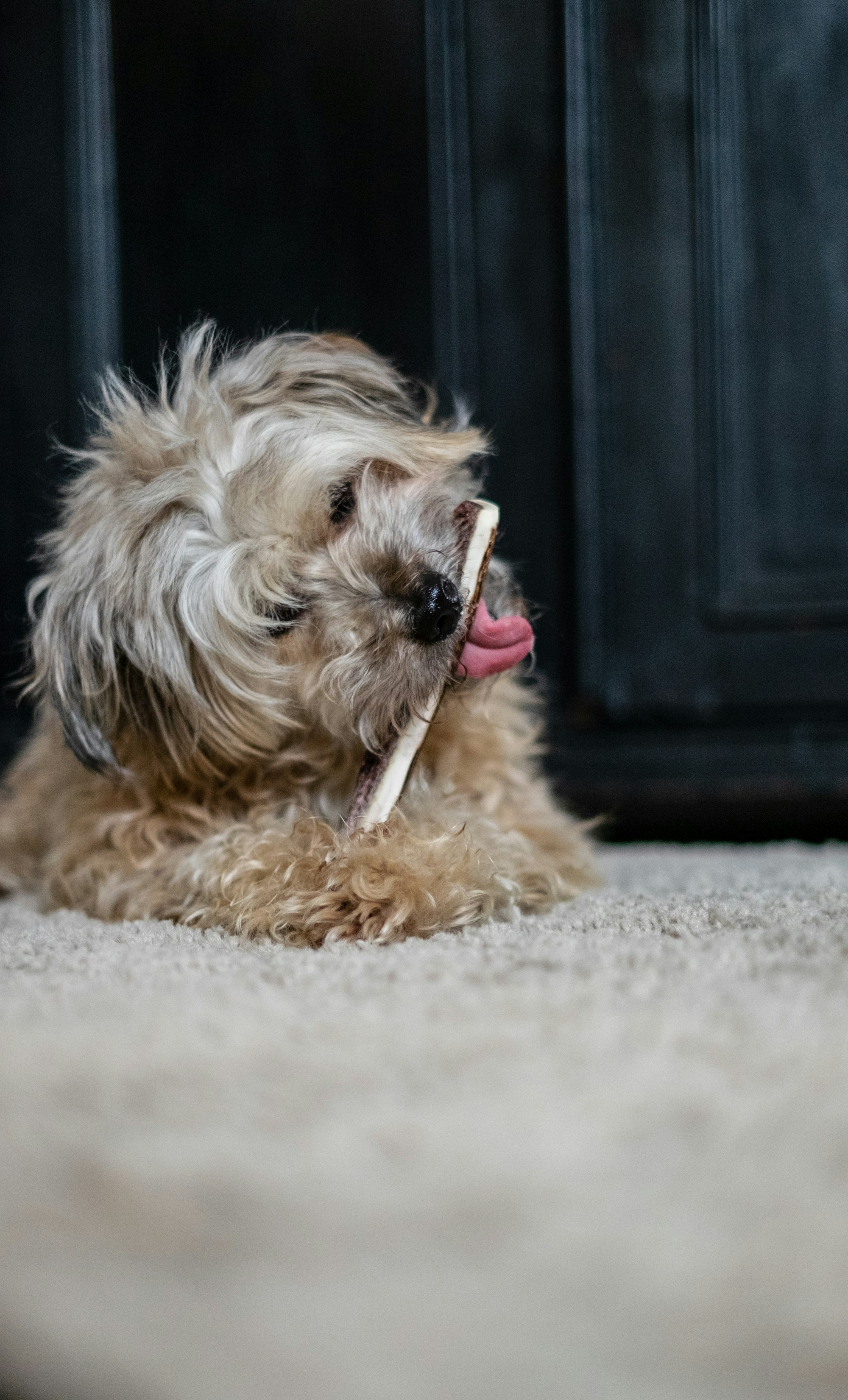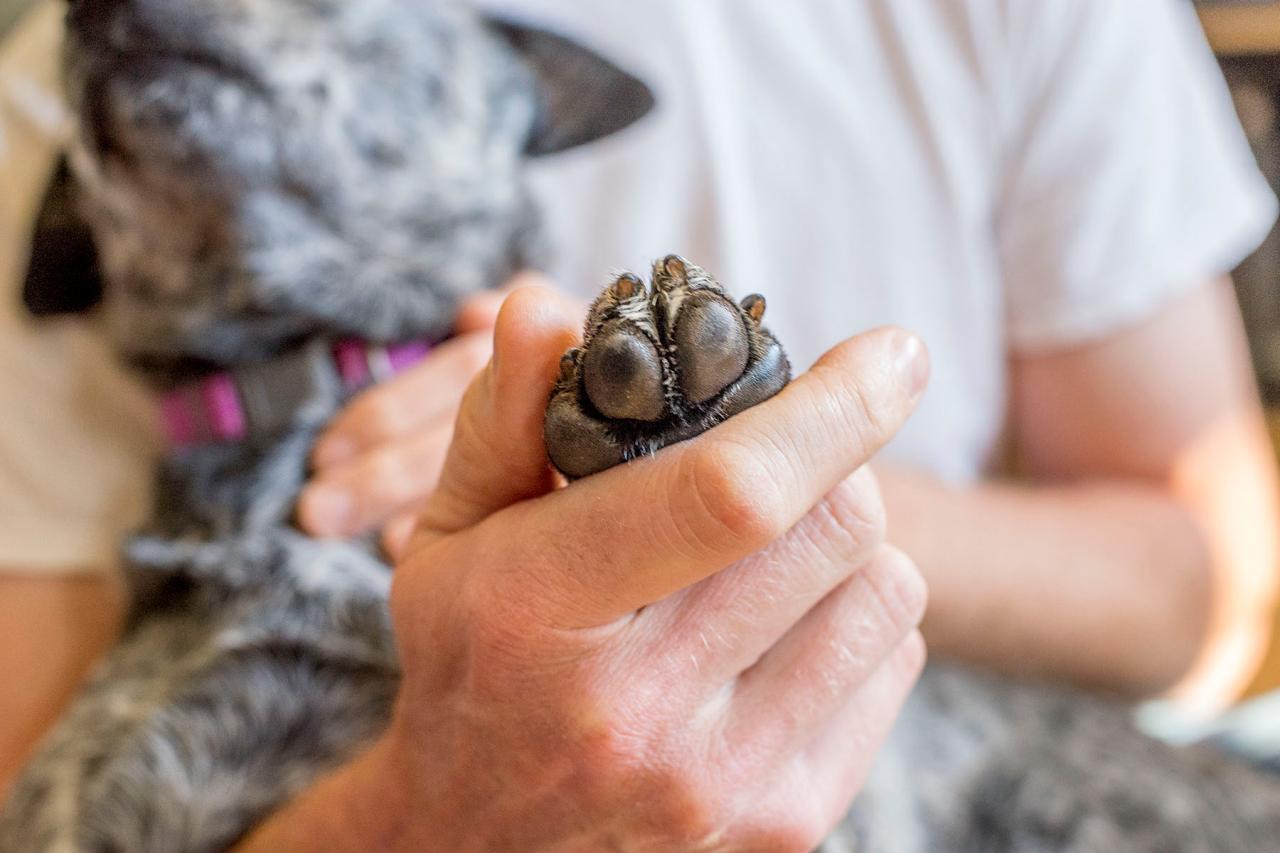When you are ready to give your dog a treat, you might automatically want to hand over a bone. Over the years, many pet owners have reservations about giving their dog a bone.
However, don't stop giving your dog a bone - you just need to find the right one. With so much contradictory information, it can be hard to make a decision.
Bones provide your dog with a way to prevent gum disease, provide essential nutrients and minerals, offer mental stimulation, and clean their teeth.
Let's look at the good and the bad of dog bones and why you should consider some options for a treat:

Should You Give Your Dog Bones or Not?
According to some reputable sources, like the FDA, bones don't make a healthy treat for your dog. This time-honored tradition often leads to dangerous outcomes for your beloved pet.
The FDA stated that "bones are unsafe no matter what their size."
But the FDA never clarifies whether these warnings extend to all bones or just ones that have been cooked. There is a difference between cooked and uncooked bones.
Dangers of Cooked Bones
Why would cooked bones be more dangerous than raw ones? During the cooking process, bones become brittle, which increases the likelihood of splintering.
In turn, these bones can cause an internal injury to your dog. Along with that, cooking removes all of the vital nutrients during that process.
Some of the FDA's reasons for avoiding those cooked bones include:
- Broken teeth
- Jaw injuries
- Mouth and tongue injures
- Esophagus, windpipe, stomach, and intestines obstructions
- Rectum bleeding
- Peritonitis
All of these medical issues often require an emergency visit to the veterinarian's office. Not only does a bone put your dog's life at risk, but the bills can be costly.
Additionally, the FDA warned about other types of bone treats, such as commercially available products. In 2015, There were 35 reports of dogs becoming ill from commercial products, including pork femurs, rib bones, ham bones, and smoked knuckle bones. The cooking and baking processes release chemicals, causing many dogs to become ill.
Even rawhide bones have concerns surrounding them. The manufacturing process often leaves trace amounts of toxic chemicals with the potential for e.coli or salmonella contamination.
What Types of Bones Are Safe for Dogs?
While the American Kennel Club does not recommend that you feed your dog a cooked bone, the organization does support other choices, like raw bones.
As a source of minerals and nutrients, bones can satisfy your dog's appetite. Chewing also helps to prevent plaque on teeth and stimulates saliva enzymes.
Dogs that chew are also less likely to lick their paws or scratch around the home.
If you are considering giving a bone, consider the raw option. These bones have not been cooked but are edible for dogs. Turkey, lamb, chicken, or beef bones are soft enough for your pup to chew and digest.
However, remember that all bones carry a risk of choking. Always supervise your dog when handing out a bone as a treat.

Types of Raw Bones
Raw bones fall into two categories: edible bones and recreational bones.
Edible bones are hollow. They do not contain marrow. In addition to that, most dogs easily crush these bones. These edible raw materials provide phosphorus and calcium, which is essential to a balanced diet for your dog.
Recreational bones have marrow on the inside. Your dog should not swallow these bones. Instead, these bones provide your dog with mental stimulation. Gnawing on the bones is the equivalent of flossing and brushing while removing tartar and preventing gum disease.
Tips for Safely Giving Your Dog a Bone
Now that you know what bones to give your pup, there are some guidelines that you will want to follow:
- First, never leave your dog unsupervised or unrestricted with a bone.
- If your dog is an aggressive chewer, watch out for signs of blood on the bone or in your puppy's mouth.
- Splinters are more likely to form once your dog has chewed down the hard part of the bone. When your dog chewed down the bone to a small piece, throw it out. Any small chunks are choking hazards.
- If your home has several dogs, always separate them. Some dogs can be territorial about their bones, causing fights with other pups.
- Fresh raw bones are the best, but they can be messy. Always feed these bones on a towel or cleanable surface. These bones become a greasy mess until your dog has removed the meat.
- Dogs that have a predisposition to pancreatitis should not be fed raw bones. The marrow can cause diarrhea and pancreatitis flare-ups.
- Make sure that you give the correct size of bones. Any bones that your dog can break into two pieces is not a good choice.
- Remember to feed your dog before handing a bone. Hungry dogs can swallow whole chunks of the bone, increasing a choking risk.
Some bones you want to avoid, such as:
- Rib and pork bones - more likely to splinter than other choices
- Leg bones - easily swallowed, leading to choking
A Healthy Alternative To Feeding Raw Bones
If you don't want to feed raw bones to your dog, there is an alternative. Think about a high-quality dental bone.
These options control tartar and plaque. Plus, they are fully digestible. These bones have all of the good qualities of bones without side effects.
But you still need to supervise your dog with these bones. There is always a risk of choking or initial blockage.
Chewing Is Essential for a Healthy Dog
Whether you choose a dog dental bone or a raw option, these treats allow your dog to chew and provide mental stimulation.
Bones also give your pup more opportunities to exercise jaw muscles and teeth. It can also keep them occupied and stop some unwanted behaviors, like licking and scratching.
In any case, make sure to always supervise your dog. While you want to avoid cooked bones, other options can make an excellent treat for your dog.






